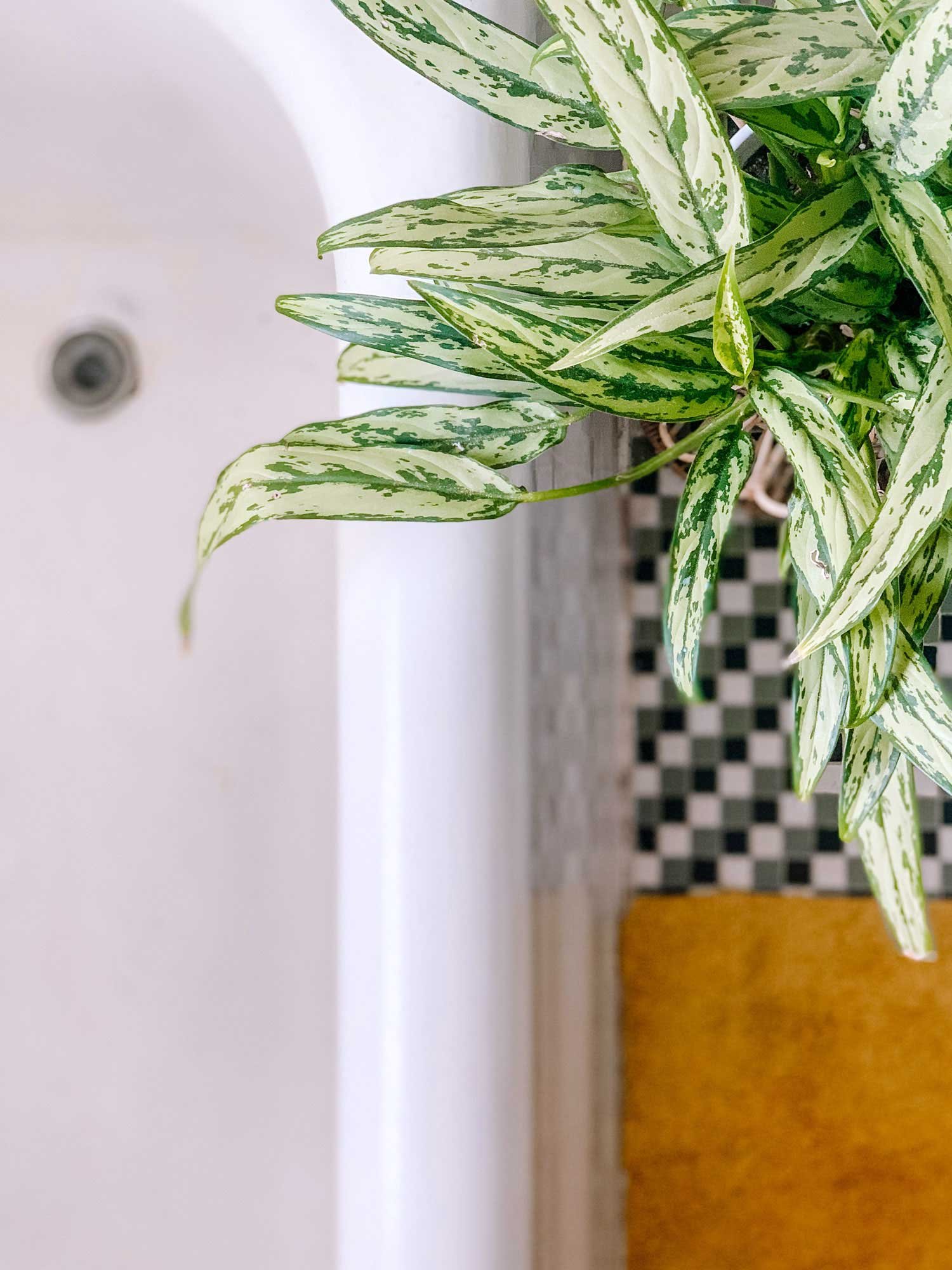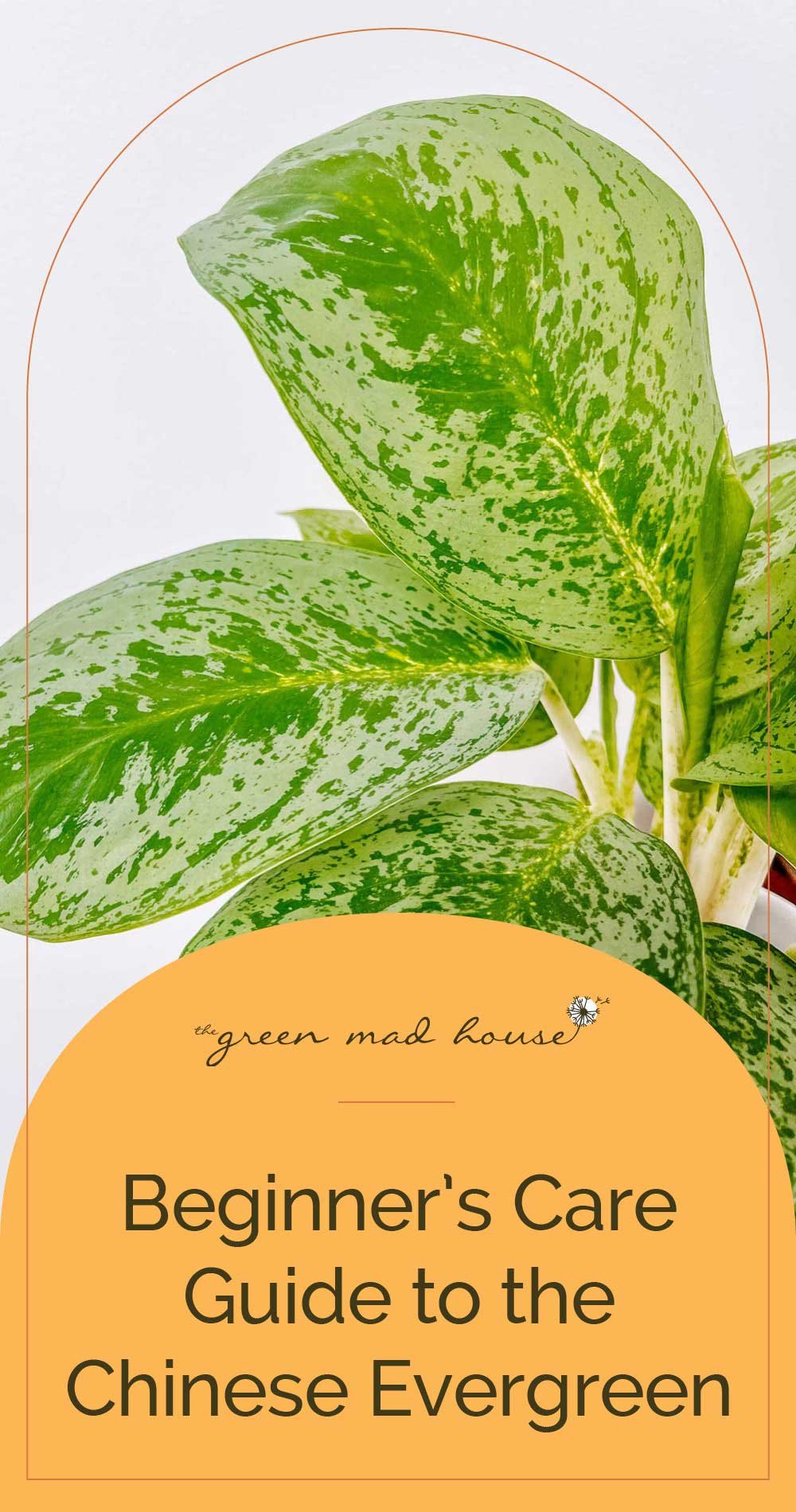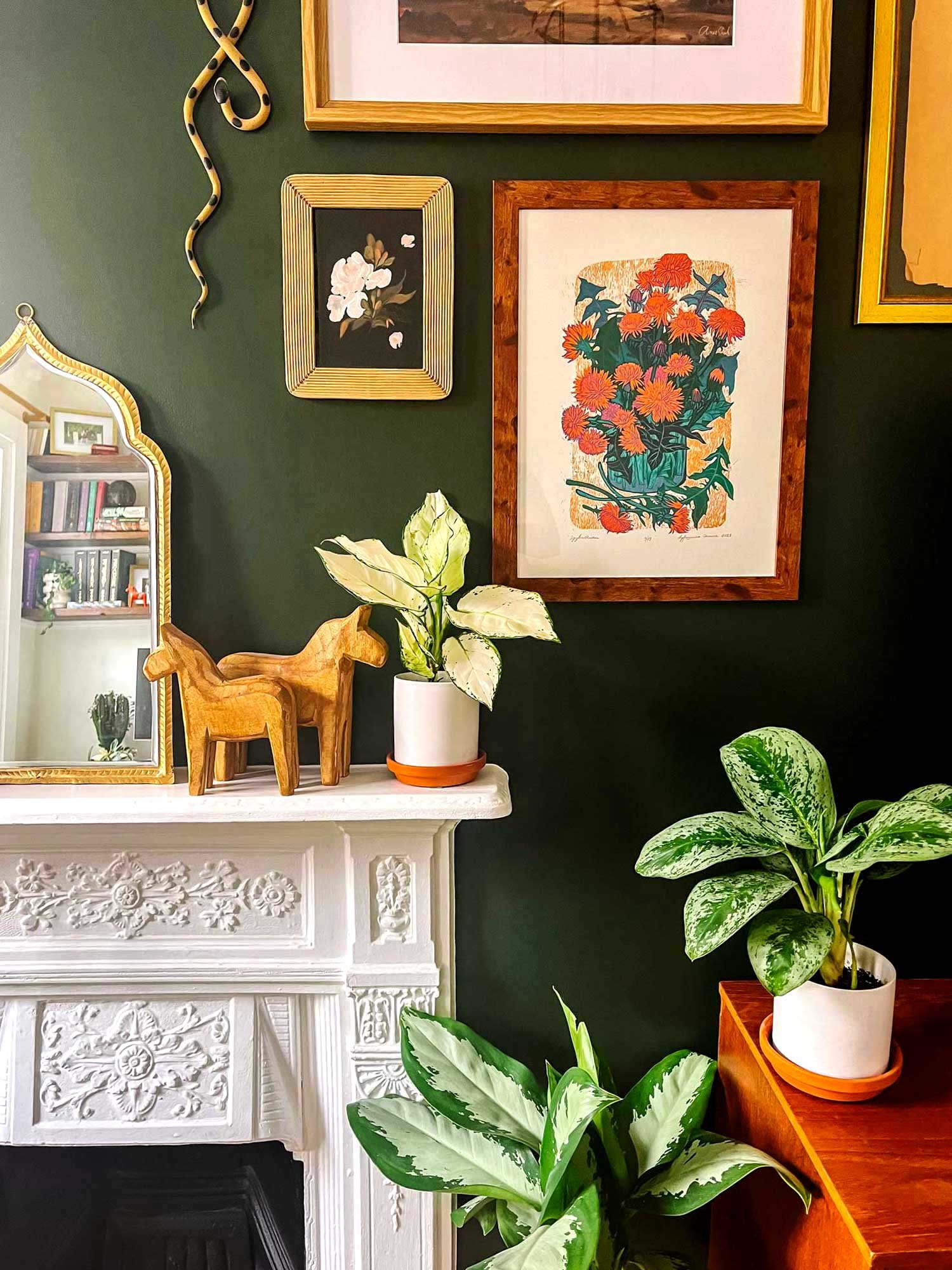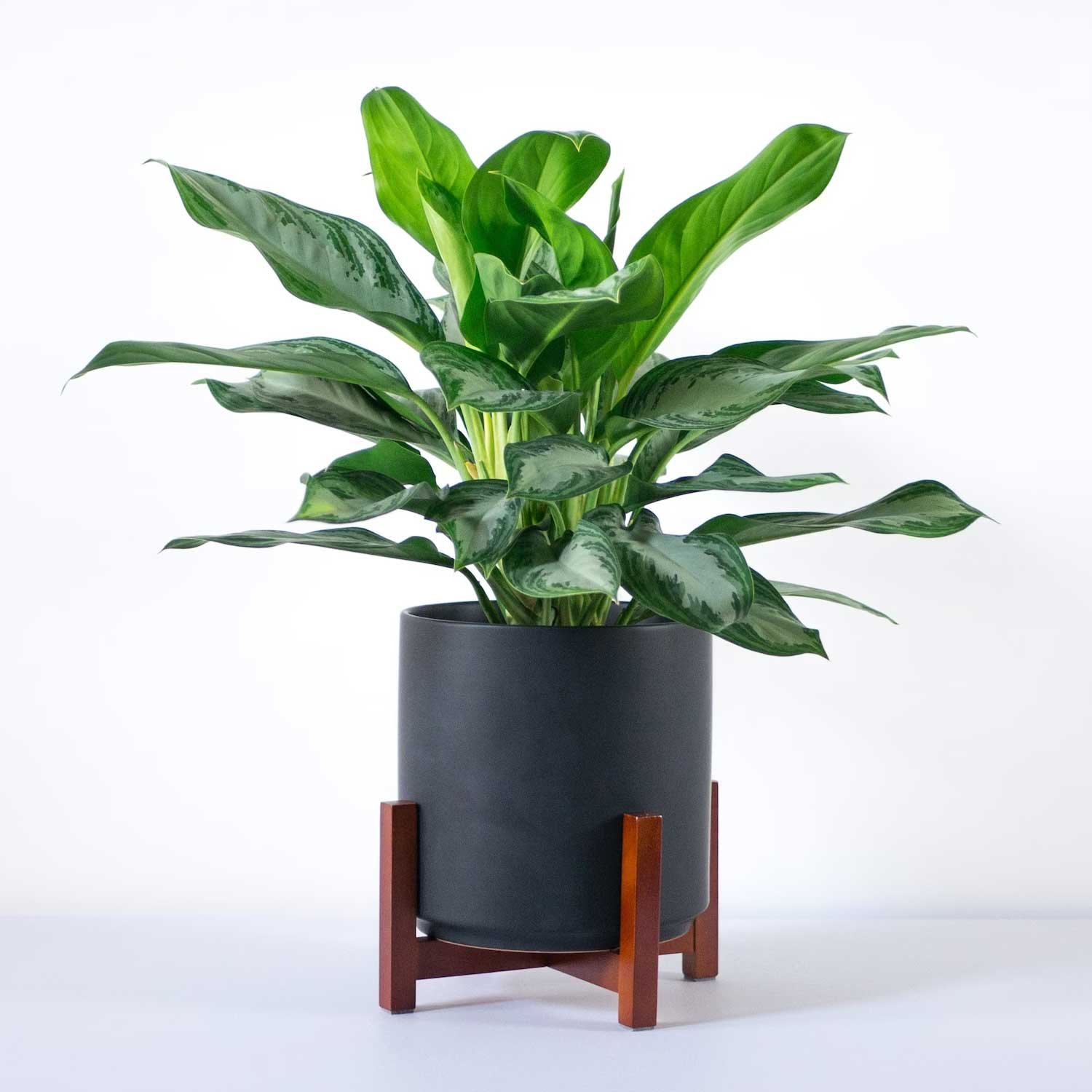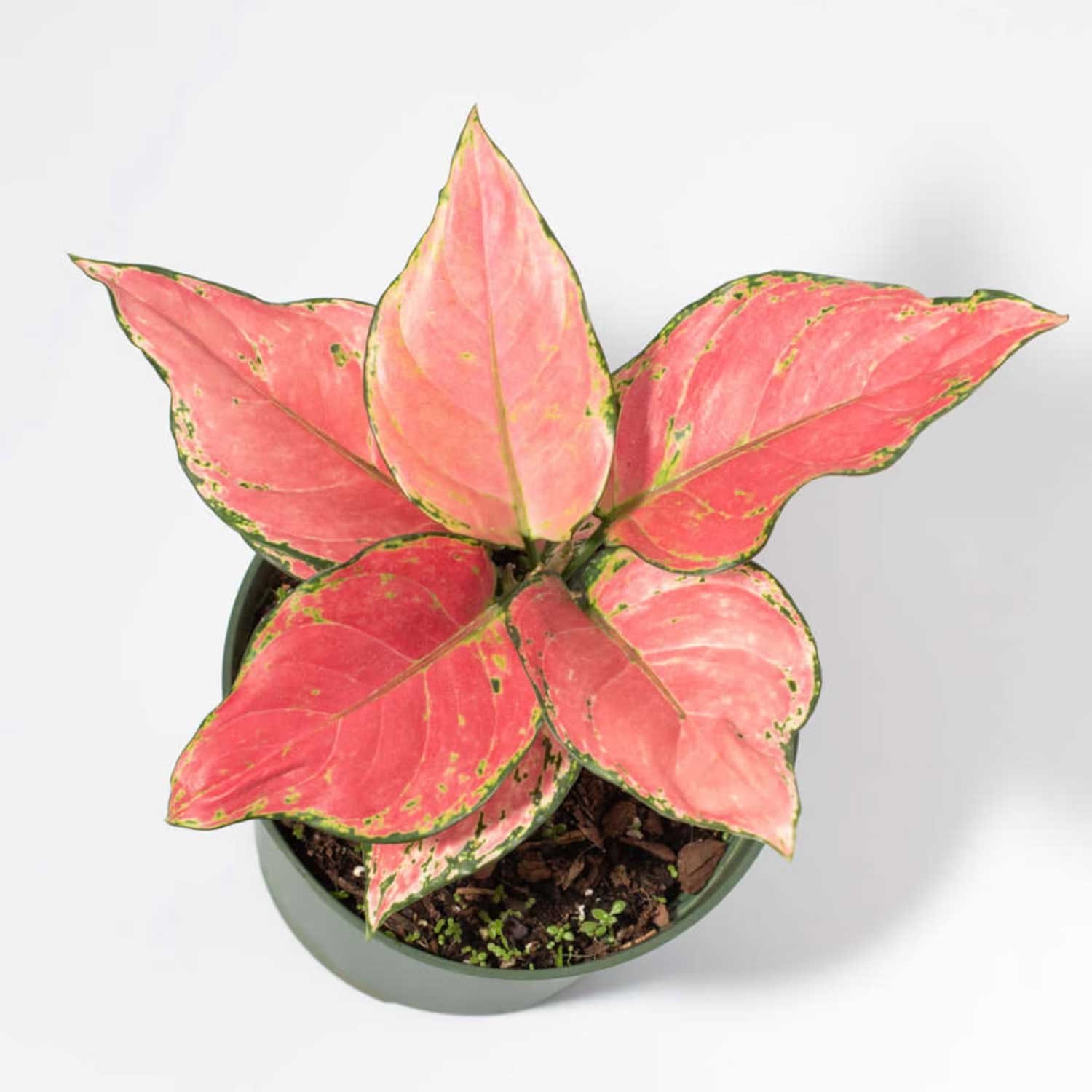Care Guide for the Chinese Evergreen
As an Amazon and Etsy Associate I earn from qualifying purchases.
‘Red Siam’ Chinese Evergreen
About the Chinese Evergreen
The Chinese Evergreen (Aglaonema) is known for being easy to grow and for its beautifully patterned leaves. This truly is the perfect beginners plant or for those with low light conditions. The leaves are large and lush and bring a low-maintenance, tropical feeling to your interior.
Chinese Evergreens have evolved over the centuries to have many color and pattern variations. They are most well known for having green with silver splashes, stripes, or speckles such as 'Maria' or 'Diamond Bay' Aglaonema. Some have colored stems, veins and leaf edges such as 'Red Siam' or 'Lemon Mint' Aglaonema while others can be almost entirely a new color like white, pink, or red such as in 'Red Star' or 'White Joy' Aglaonema.
Although they can get 3 feet tall, Chinese Evergreens are slow growing and great for desks and shelves. If they do get larger, their rounded forms fill a corner very nicely. Their slow growth means they only need a larger pot every 2-3 years and they actually prefer a tighter pot space. They can also produce blooms if given enough light. They look like dainty Calla Lily blooms and are very subtle.
Types of Chinese Evergreen
There are so many forms of Aglaonema and I recommend them all! Here are five that I currently or previously have owned that all look very different.
- Silver Queen - The Silver Queen is one of the most common Chinese Evergreens. It has long and skinny leaves with dark green and silver swirled together. Mine is placed in my bathroom a few few from a west window that is fogged out as its in the shower. It has been thriving and even bloomed last year!
- Red Siam - This is a gorgeous option if you want a plant that gives you rich color year round! The leaves are rimmed in red, speckled in green and yellow, and the stems are pink. It prefers slightly more light than its fully green cousins. As a result, mine sits a few feet from a south window.
- Diamond Bay - This is an option that has very large, long, lance shaped leaves. The center of the leaves are a pale, silver-green color that is a little more than half the width and stretches end to end while the outer edges are a dark green. Mine is sitting a few feet from a northeast window.
- White Joy - This is a newer and more rare varietal with stunning bright creamy white foliage with a deep green leaf halo and sparse speckled green variegation towards the edges. This will need brighter light to maintain its vibrant variegation. Mine is sitting a few feet from an east window.
- Lemon Mint - This is the latest variety I have gotten and I am obsessed. It is one of my favorite leaf colorings I have ever had. Lemon Mint has silver blotches throughout the foliage with striking green and yellow veining.
How to Care for the Chinese Evergreen
A Chinese Evergreen can grow anywhere in your home with few exceptions.
LIGHT: They can handle low light to bright indirect light and even thrive under artificial light which makes it an ideal plant for an office setting or you may spy it in your local mall. The varieties with more color (like the ‘White Joy’ Algaonema) or with more color variations, prefer a slightly brighter light than the other varieties. They will live in the lower light, they just may lose some of their color definition. To help your Chinese Evergreens continue to receive maximum light we have to keep them dust free. Clean their leaves with a damp, lint-free cloth that has not had any cleaning products on it.
HUMIDITY: The Algaonema does like humidity but is not essential. I keep one in my bathroom and it seems to love it but it is not a requirement for success. If you live in a dry, desert climate then you may need to assist it with misting, I recommend a continous mister , a humidifier , or by placing it in a more humid room such as a bathroom, kitchen or laundry room.
WATER: Chinese Evergreens like to thoroughly dry out between waterings and since they are drought-tolerant, they won’t hold it against you if you go too long. When you do water, water thoroughly and let the pot drain before placing it back in its saucer. If your plant looks droopy it’s letting you know it needs some water. When in doubt stick your finger in the soil an inch or two and feel how dry the soil is. During growing season water once a week while in winter you can extend that time. If your plant starts to get yellowing leaves that is a sign of overwatering. Let it dry out thoroughly before watering again.
FERTILIZER: I fertilize my Chinese Evergreens every 4-6 weeks during growing season using a liquid fertilizer but do not in the winter.
SOIL: Chinese Evergreens are not really picky. They dor prefer a slightly more acidic soil that drains well. If you find your soil isn't draining miz in some sand or perilite and make sure the pot has good drainage holes.
Common Questions
REPOTTING: Chinese Evergreens grow slow meaning they need a larger pot only every 2-3 years. This doesn’t mean you shouldn’t be repotting it in fresh soil back into the same pot, this keeps nutrients high. As a whole, Aglaonema actually prefer a tighter pot space. This also helps avoid root rot from excess soil. Don't worry, I did write a guide on repotting your plants.
PROPAGATION: Division is the best way to propagate your Aglaonema. I like to target the newer shoots to avoid stress to the plant by dividing a major root ball.
- Slide it out of the pot and gently break away at the soil around the root ball.
- Identify a shoot that is on the edge of the root ball and tease it away from the main root ball.
- Plant it in a new pot.
PRUNING: Your Aglaonema should be quite bushy but as it gets older it may start to elongate and drop some leaves. Pruning can help solve this. Trim the plant with clean scissors or shears below a leaf node which will encourage leaves to sprout from that area.
PESTS & DISEASES: Aphids, whiteflies and mealybugs are the most common pests for Chinese Evergreen. Isolate your plant and use rubbing alcohol on a Qtip to get in the creases or Neem Oil.
PETS: These are mildly toxic to humans and pets if ingested. That being said, I have five of these and my cats have never messed with them.
FLOWERS: Mature plants that receive enough light may produce flowers in spring or summer. They look like spikes (called a spadix) with a creamy hood wrapped around it. This is very similar to a Calla Lily. Many prefer to cut these off so that plant can focus its energy on new growth.
There are so many amazing forms of the Chinese Evergreen and I hope this inspires you to fill your home with a couple. Let me know if you do in the comments below or tag me on instagram @thegreenmadhouse.





